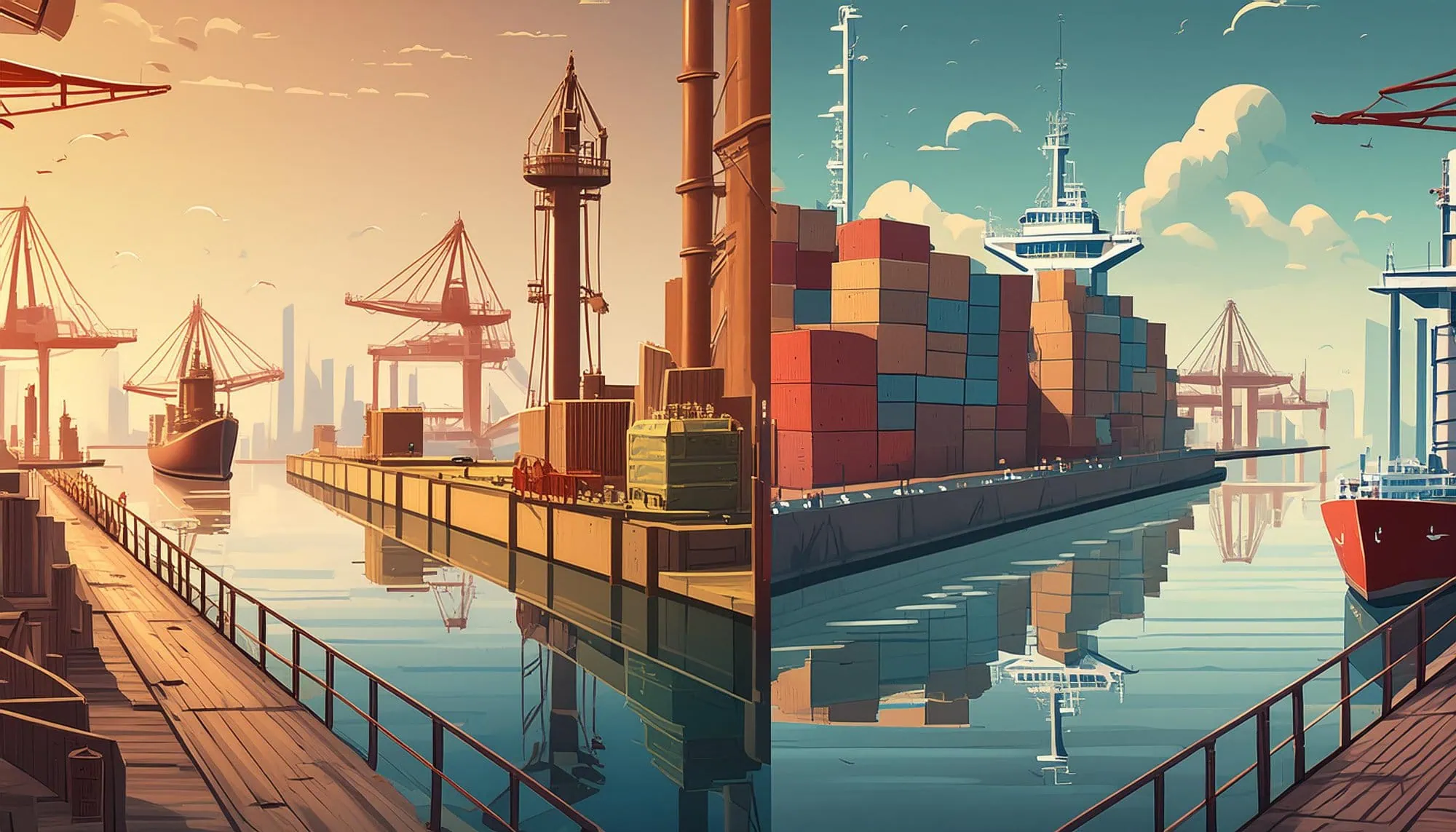
Today, let’s dive into the fascinating history of ports, from ancient times to the modern era. You might be surprised at how much has changed (and how much remains the same) in the world of maritime trade.
Ancient Ports: The Original Hubs
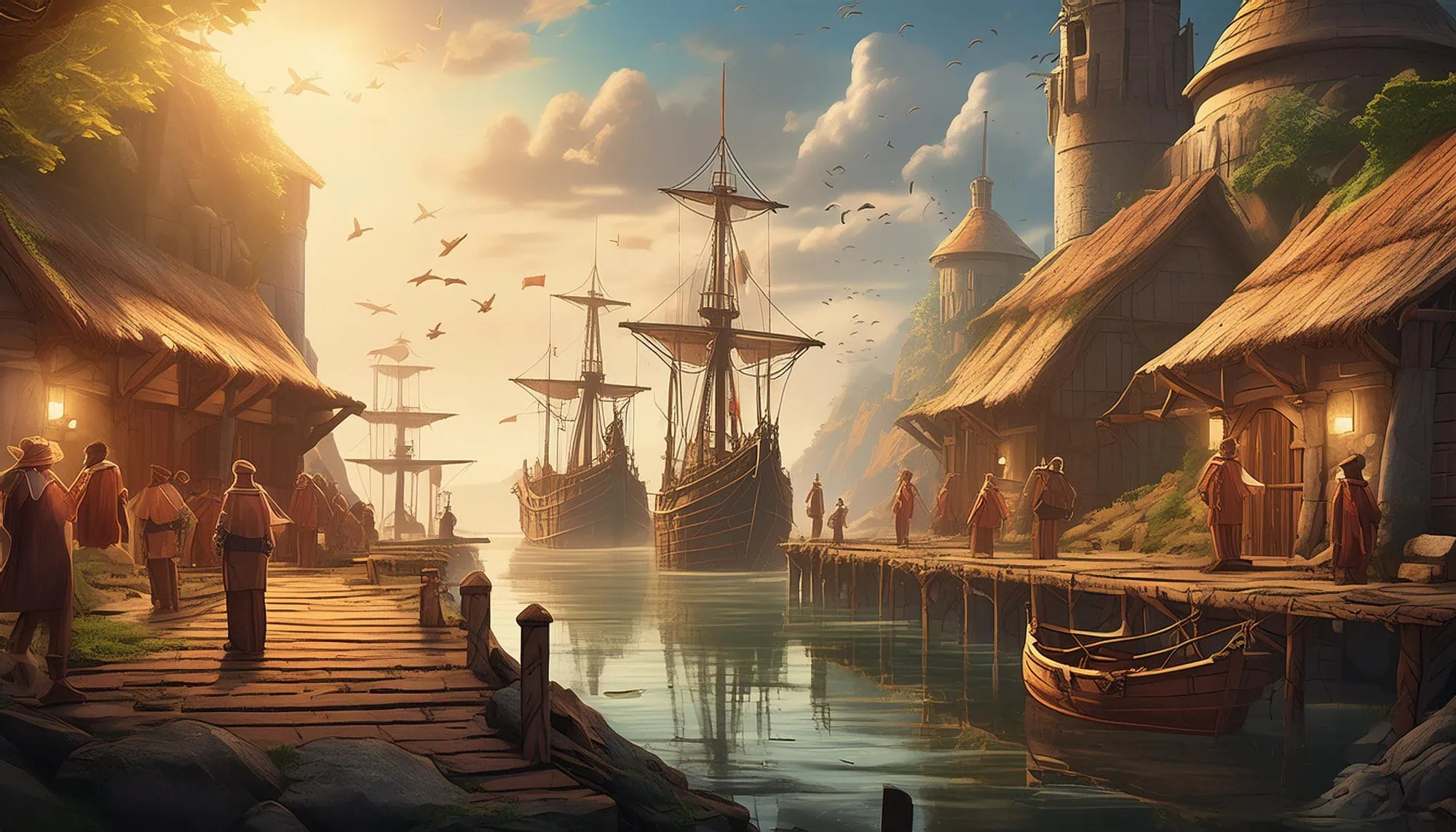
Way back when, ports were the original places of interest – bustling with activity, but minus the fancy infrastructure we see today. Think of them as the ancient equivalent of a pop-up market, but instead of artisanal coffee and handmade crafts, they were all about:
Fishing
- Fresh seafood galore! Local fishermen would bring in their daily catch, and traders would snap it up.
- Fishing villages sprouted up, with families passing down their fishing secrets like precious recipes.
Local Trade
- Merchants and traders would swap goods like food, tools, and other essentials. Bartering was the name of the game – “I’ll give you three chickens for that nice piece of cloth, deal?”
- It was like a never-ending garage sale, but with more olives and less garage.
Basic Shipbuilding
- Skilled craftsmen would construct and repair ships using locally sourced materials like wood and rope.
- Shipbuilding techniques were passed down through generations, with innovations and improvements emerging over time – like adding a fancy new sail or two.
Minimal Infrastructure
In these ancient ports, cargo was loaded and unloaded directly between ships and land, with minimal infrastructure in place. It was like a big game of Tetris, but with crates and ships instead of blocks.
Warehousing and Wholesaling
Despite the minimal infrastructure, warehousing and wholesaling thrived near the port, forming the core of port cities. It was a bustling hub of activity, with:
- Trade guilds and merchant associations popping up like trade unions.
- Cities like ancient Athens growing up around the port, with philosophers like Socrates and Plato strolling along the harbors, pondering life’s big questions.
These ancient ports were the original hubs of global trade, commerce, and culture – and they laid the groundwork for the modern ports we know and love today.
Industrial Revolution: The Game-Changer
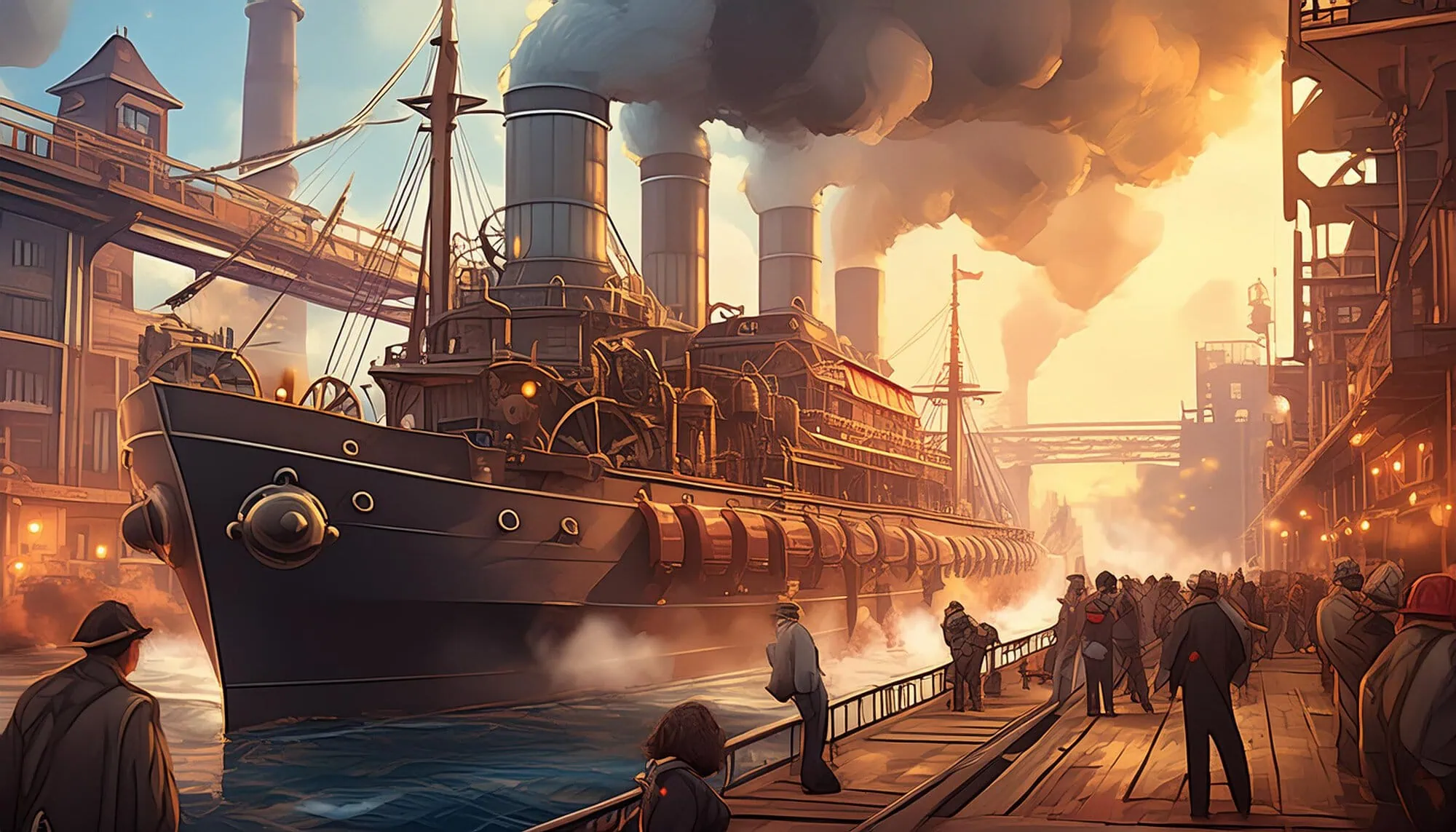
Fast-forward to the 18th and 19th centuries, when the Industrial Revolution came along and transformed global trade like a superhero cape! Ports had to adapt quickly to handle the new, larger, and more efficient ships that were suddenly dominating the seas. It was like a game of “Port Tycoon” – and they had to level up fast!
Quays, Jetties, and Docks, Oh My!
To keep up with the times, ports expanded their quays, built jetties, and constructed docks to facilitate shipbuilding. The goal was to create more space for ships to dock, load, and unload cargo – and to make the whole process more efficient.
Railways to the Rescue!
But that’s not all – railways came to the party, connecting to port terminals and opening up vast inland areas (hinterlands) to maritime traffic. Goods could now be moved quickly and easily from the port to the heart of the country, and vice versa. This meant that:
- Goods could be produced and consumed on a much larger scale.
- Trade could reach new, distant markets.
- The economy could grow and grow, like a snowball rolling down a hill!
Specialization Station
As trade volumes and diversity increased, ports began specializing in specific cargo types, like coal or grain! This meant that:
- Ports could handle cargo more efficiently.
- Ships could be designed for specific cargo types.
- Trade could become even more global and interconnected.
And that’s how ports adapted to the Industrial Revolution – by leveling up, expanding, and specializing!
Containerization: The Revolution That Changed Everything
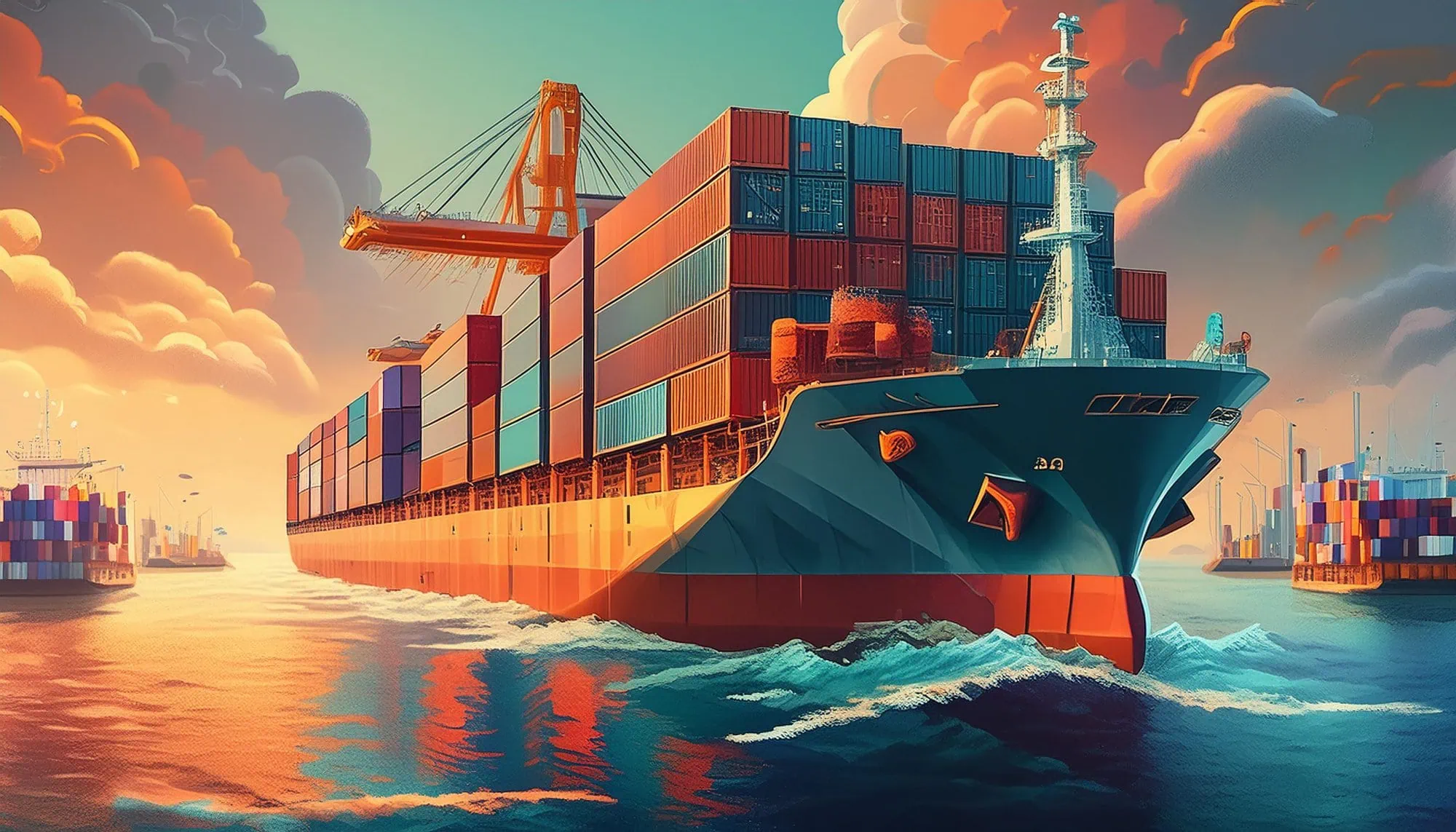
In the mid-20th century, containerization burst onto the shipping scene and revolutionized the way goods were moved around the world! Standardized containers made loading, unloading, and transportation faster and more efficient – a major win for global trade!
Container Terminals: The New Hub of Activity
Container terminals became the go-to hub of port activity, equipped with specialized cranes and handling equipment to quickly and easily move containers around. Deeper waters were needed to accommodate the larger container ships that followed, leading to the development of a “hub-and-spoke” system that streamlined global trade.
The “Hub-and-Spoke” System: A New Era in Shipping
In this system, a few large ports (hubs) handle massive volumes of containers, while smaller ports (spokes) distribute them regionally. This efficient network enables fast and cost-effective transportation of goods worldwide – a dream come true for traders and merchants!
The Impact: Faster, Cheaper, and More Efficient
- Containerization had a profound impact on global trade:
- Shipping times and costs were drastically reduced
- Trade volumes skyrocketed!
Containerization was the game-changer that transformed the shipping industry, making it faster, cheaper, and more efficient. This innovation paved the way for global trade as we know it today – and we couldn’t be more grateful!
The Modern Port Landscape

Welcome to the modern port landscape, where the game is on! Ports around the world are competing fiercely to be the best, the fastest, and the most efficient. It’s a global showdown, and the stakes are high!
Efficiency, Automation, and Integration: The Winning Formula
To stay ahead of the game, ports are focusing on three key areas:
- Efficiency: Streamlining operations to reduce congestion and increase productivity.
- Automation: Using cutting-edge technology like cranes and vehicles to improve speed and safety.
- Integration: Linking up with logistics chains to create a seamless supply chain.
Information Technology: The Brain Behind the Operation
Information technology is the unsung hero of modern ports. Advanced systems track cargo movement in real-time, providing end-to-end visibility and enabling ports to respond quickly to changes in the supply chain. It’s like having a crystal ball that shows you exactly where your cargo is and when it will arrive!
Automation: The Future of Port Operations
Automation is revolutionizing port operations, increasing speed and safety while reducing costs. Cranes and vehicles are getting a high-tech makeover, with autonomous systems taking the wheel. It’s like a sci-fi movie come true!
Sustainability: The New Frontier in Port Operations
But modern ports aren’t just about efficiency and automation; they’re also about sustainability. Environmental regulations and a growing focus on green practices are shaping the industry. Ports are reducing emissions, managing waste, and exploring renewable energy sources like wind and solar power. It’s a new era in port operations, and sustainability is the name of the game!
In the modern port landscape, competition meets innovation, and the result is a faster, greener, and more efficient supply chain.
The Future of Ports
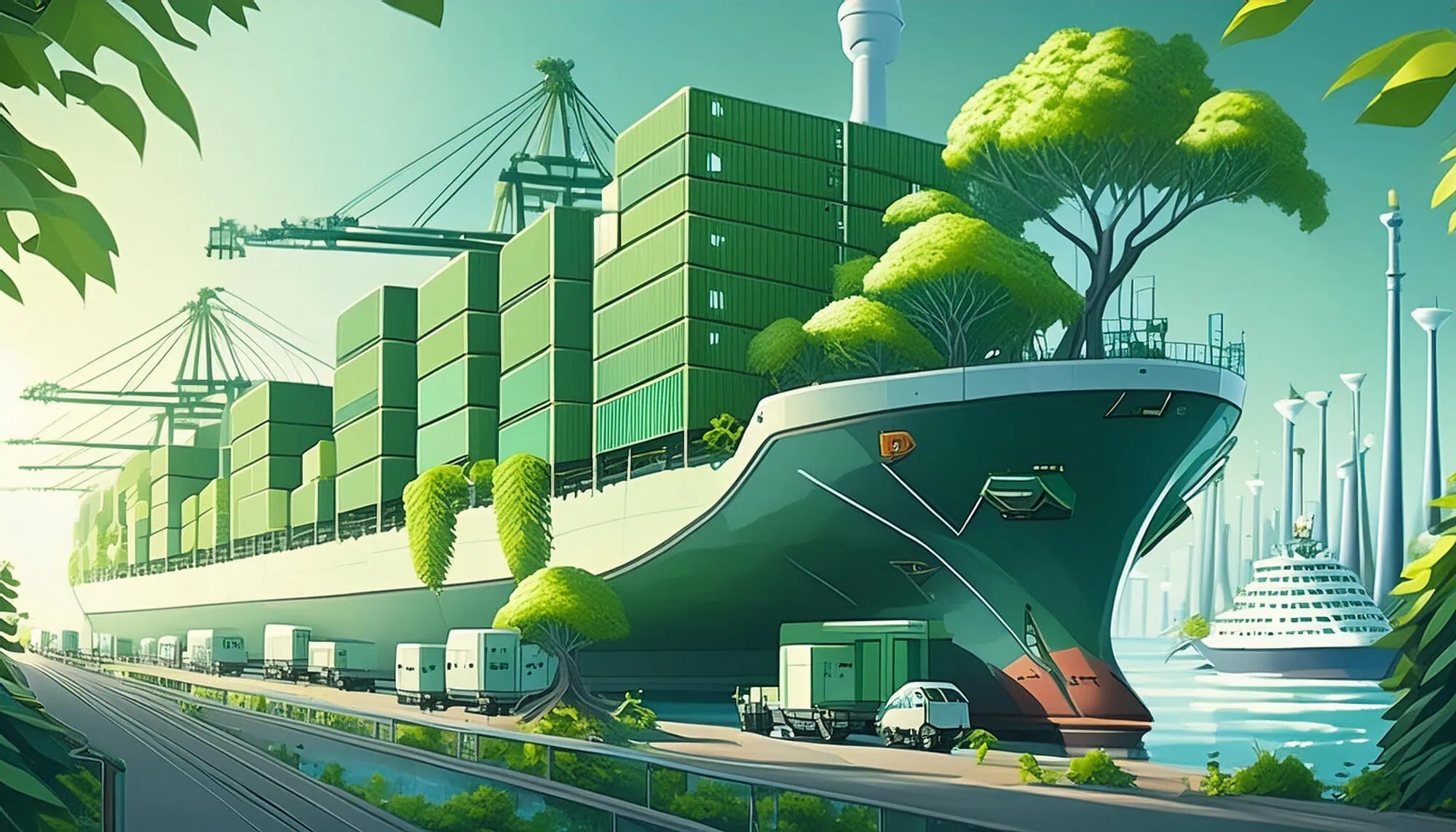
As global trade continues to grow and technologies evolve, ports will likely see further development in areas like:
- Smart Ports: Increased use of artificial intelligence (AI) and automation for even more efficient operations.
- Intermodal Integration: Seamless integration of ports with other transportation modes like railways and inland waterways.
- Cybersecurity: Robust cybersecurity measures to protect critical port infrastructure from cyber threats.
- Mega Container Ports: The rise of massive container ports, capable of handling the largest container ships and unprecedented volumes of cargo. These mega ports will become crucial hubs for global trade, driving economic growth and development.
- Sustainable Port Cities: The growth of sustainable port cities, where ports, cities, and industries work together to reduce environmental impact, increase efficiency, and promote sustainable development.
The evolution of ports has been shaped by technological advancements, economic shifts, and the growing demand for global trade. From ancient maritime hubs to modern container giants, ports have played a crucial role in facilitating international commerce and shaping the global economy. As trade continues to grow and evolve, ports will remain at the forefront, driving innovation and connecting the world.
So, the next time you receive a package or enjoy a product from afar, remember the incredible journey it took to get to your doorstep – and the crucial role ports play in making it all possible!
